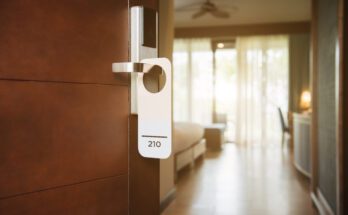Gerrit Cole’s Bummer Summer
One look at the surface-level statistics will tell you that something hasn’t panned out in 2020. A 3.63 ERA? A 4.69 FIP? Thirteen home runs allowed in only nine starts?! He’s allowed a home run in each start, which is about as disastrous as it sounds. Heck, even his record tells you something is up; he’s 4-3 this year on an underachieving Yankees team, and while wins and losses are silly contextual statistics, Cole went 35-10 the last two years. Something is clearly up.
| Year | FB | SL | CU |
|---|---|---|---|
| 2015 | 96.5 | 87.7 | 82.1 |
| 2016 | 96.0 | 88.3 | 81.8 |
| 2017 | 96.3 | 88.5 | 80.8 |
| 2018 | 97.0 | 89.1 | 82.9 |
| 2019 | 97.4 | 89.5 | 82.8 |
| 2020 | 97.0 | 89.1 | 83.8 |
Starters can also lose feel for one of their pitches, and change their pitch mix to compensate. That hasn’t happened either:
| Year | FB | SL | CU |
|---|---|---|---|
| 2015 | 50.9% | 21.4% | 7.8% |
| 2016 | 50.1% | 17.8% | 9.9% |
| 2017 | 41.8% | 17.3% | 12.2% |
| 2018 | 53.4% | 19.9% | 19.3% |
| 2019 | 53.6% | 23.1% | 15.5% |
| 2020 | 53.5% | 24.8% | 16.5% |
Uh… maybe he’s the victim of a poor early-count approach. He’s throwing fewer fastballs this year to start batters off, but just as many pitches in the zone. He’s not doing it by throwing more curveballs and sliders in the zone, either:
| Year | Fastball% | Zone% | Zone Brk% |
|---|---|---|---|
| 2015 | 71.2% | 52.4% | 43.6% |
| 2016 | 73.4% | 53.3% | 46.0% |
| 2017 | 64.4% | 55.7% | 58.2% |
| 2018 | 61.7% | 57.8% | 51.0% |
| 2019 | 57.0% | 56.4% | 52.8% |
| 2020 | 54.5% | 57.8% | 50.0% |
In other words, Cole is throwing fastballs less often to start, but he’s making up for it by throwing them in the strike zone more often. Sounds dangerous. Are batters suddenly teeing off on him on 0-0? Nope! They’re actually swinging less than ever, and the whole thing is too small-sample to matter anyway. He’s getting to 0-1 54.5% of the time, in line with his dominant 2019. Next!
Okay, if it’s not about his behavior to set the tone, what about his behavior when there’s a chance to end things? Maybe Cole has lost his way with two strikes, and is simply giving batters too many bites at the apple. In today’s game, you don’t want to be in the business of extra-apple-bite-giving.
There’s only one inconvenient truth about this narrative: it’s not true. When Cole throws pitches with two strikes, he’s still in attack mode. His put away rate, the rate at which two-strike pitches turn into strikeouts, has been stable. He’s going to his slider more often, and most metrics have that as his second-best pitch, behind only his fastball. All in all, his behavior looks downright logical:
| Year | Put away% | Slider% | SL Put away% |
|---|---|---|---|
| 2015 | 20.4% | 27.7% | 27.4% |
| 2016 | 16.8% | 23.3% | 22.8% |
| 2017 | 19.5% | 23.1% | 21.0% |
| 2018 | 25.2% | 26.6% | 24.7% |
| 2019 | 28.6% | 28.7% | 27.4% |
| 2020 | 24.4% | 34.8% | 25.0% |
If you’re looking for a sliver of a change, Cole’s slider is ever so slightly less devastating than it was a year ago. That’s roughly two sliders’ worth of difference, though; hardly worth mentioning. Batters are spoiling the pitch slightly more often, but that makes sense given that he’s throwing it more. Nothing looks amiss here.
No, if you want to find worrisome trends in Cole’s 2020 season, you need to look all the way down to contact management. That phrase often merits a derisive laugh: “Oh, that guy? He’s only getting by on contact management. Can’t miss a bat to save his life.” That’s clearly not Cole. But all the same, those home runs are the problem, not some esoteric pitch mix question. Opponents are simply hitting the ball harder when they connect:
| Year | Avg EV | Barrel% | Hard Hit% |
|---|---|---|---|
| 2015 | 88.3 | 3.8% | 35.1% |
| 2016 | 87.8 | 2.7% | 30.9% |
| 2017 | 86.3 | 7.4% | 33.5% |
| 2018 | 89.1 | 6.2% | 39.8% |
| 2019 | 87.6 | 5.7% | 35.5% |
| 2020 | 91.1 | 10.2% | 47.2% |
Worst of the Statcast era in every category? It’s not great! Average exit velocity can deceive, because the distribution matters, but 3.5 miles an hour is a lot. Barrel rate and hard hit rate don’t suffer from those distribution issues, and they’re telling a scary story. His average launch angle against has increased, as well. That’s a horrible stat — a pop fly and a grounder average out to a line drive. But it still has qualitative use, because it tells us that Cole’s opponents are putting the ball in the air more frequently, and we already know they’re hitting the ball harder.
Alex Chamberlain has done some great research into explaining what pitchers can and can’t control. His finding — not all that surprising when you think about it for a minute — was that pitchers have more control over launch angle (largely by where they locate their pitches) while batters are in the driver’s seat when it comes to exit velocity. Sounds like good news — Cole’s hard hits aren’t his fault!
Yeah, uh, about that… Cole scored terribly last year in Chamberlain’s expected launch angle metric. He was in the bottom 15 pitchers in baseball when it came to the expected percentage of balls hit at dangerous angles — between 12 and 27 degrees. One silver lining? He fared much better when it came to expected percentage of balls allowed between 18 and 22 degrees, the sweetest of sweet spots, which means he was throwing to locations that gave batters a little less margin for error.
That’s no death knell for pitchers — there are plenty of good pitchers high on this list, and they get by on swing-and-miss stuff, which Cole has in spades. Jacob deGrom, for example, ranks similarly, and I mean, he’s Jacob deGrom (groundbreaking analysis here). Ignore where he threw his pitches (that’s what Alex used to come up with expected rates) and focus instead on what batters did, and Cole was excellent in 2019. He had a launch angle standard deviation of 29.5 degrees, near the top of the league (deGrom, for comparison, checked in at 29.8). That number is a little worse this year, at 27.5 degrees. He’s still doing a decent job of keeping batters from repeating line drives all over the place — though due to a change in tracking technology, it’s probably best not to read too much into it.
Furthermore, Cole allowed 33% of batted balls to be hit in the sweet spot (between 8 and 32 degrees) last year. He’s at 35% this year (league average 35%) — again, the tracking has changed — and yet, those darn home runs keep on coming. Throw math at it all you want — batters keep hitting balls right out of the park.
Rather than look at any top-level metrics, then, let’s look at the home runs. Eight have been on fastballs, two on sliders, two on curveballs, and one was on a changeup. That’s a roughly average distribution for him — fastballs are the culprit on a majority of his home run balls. There’s nothing obviously wrong with those eight fastballs either: they’ve averaged 97.1 mph, faster than his average fastball this year. If there’s anything truly scary about them, it’s the location — six have been over the heart of the plate. This pitch isn’t exactly putting Mike Zunino to the test:
And Adam Eaton got a gift here with two strikes:
In fact, two-strike homers were a problem for Cole in 2019 as well, when he gave up 14 of them. That’s partially because he attacks the zone more than league average with two strikes, putting hitters in a bind: take, and you might be out anyway, but swinging at one of Cole’s pitches isn’t usually a great outcome either. But wait! He’s throwing in the zone on two-strike counts at the lowest rate of his career this year and still giving up these dingers. Ugh!
At this point, I’m grasping at straws. Interestingly, though I think we might have found the answer up above, before we got into any of this spray management or launch angle this-and-that. You see, Cole has never particularly excelled at limiting damage when batters make contact. He’s allowed a .395 xwOBA (.375 wOBA) on fastball contact since 2018, with the league nearby at .398.
He’s been a little better at avoiding loud contact with his slider, a little worse with his curveball; for the most part, though, he’s just a pitcher when the ball gets put into play. Remember Chamberlain’s findings, that pitchers control launch angle? Well, Cole’s nothing special there. How surprising is it that he’s not the king of weak contact?
Cole’s genius, then, lies in missing bats. In Houston, he missed bats with everything — batters swung and missed at 19.3% of the fastballs they saw from Cole last year, which is an absolutely outrageous mark. No other starter has finished within three percentage points of that mark in the past five years. That’s Josh Hader territory, only as a starter with two plus secondaries. This year, that number has plummeted to 12.7% — still the 12th-best mark in baseball, but a far cry from last year.
I’m skeptical that Cole will keep giving up homers at such a preposterous rate. But I’m also skeptical that he’ll ever regain his 2019 form, if only because it was so far removed from anything we’ve seen from other starting pitchers. A slight drop in his level doesn’t make him average; it merely makes him less-than-Cole. His fastball has a half-inch less rise on average this year, a half-inch more arm-side run. His average velocity is off a half a tick. Small variations, but variations nonetheless.
Maybe Chamberlain’s research is right, and Cole’s pitching style is vulnerable to balls hit at the worst possible angles. Maybe Cole’s past results are the better guide, and he’ll continue doing a decent job of inducing a wide array of launch angles (that standard deviation number from above). Most likely, though, batters will continue to do roughly average damage when they connect. That’s a good guess for all pitchers, and Cole hasn’t done anything in particular to make me doubt it for him. What’s wrong with Gerrit Cole? I don’t think it’s the home runs. I think it’s the whiffs — and it’s not really wrong, just less right than it was last year, ridiculous home run streak aside.



